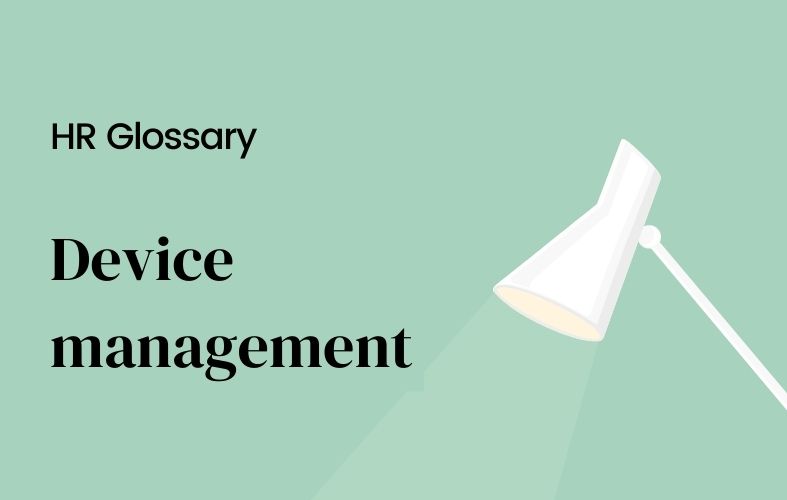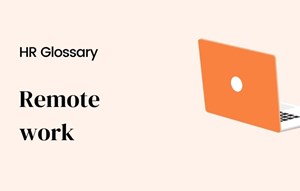Device management

[Sommaire]
What is device management?
Device management, also known as mobile device management or MDM, is the administration of mobile devices such as phones, tablets, and laptops. It involves the upkeep, security, and usage of devices used by employees.
Why is it important to have good device management?
Mobile devices mean employees are more productive than ever. They can work from any location at any time. However, technology can create its own problems. By setting up good mobile device management software, an organization can :
Improve security
Mobile application management will protect confidential information if devices are stolen by locking or wiping all data. You can also block unsafe websites from employees to keep your organization safer from the threats of malware and data breaches.
Reduce costs
Good enterprise mobility management will allow you to save costs by implementing a “Bring your own device” (BYOD) policy.
Become more efficient
Managing mobile devices can help simplify IT administration and ensure all devices have the same OS updates for more efficient working practices.
Be more productive
By having good mobile device management in place, you can ensure all employees have up-to-date, well-maintained, and effective devices that enable them to do their jobs.
Clear guidelines
Suppose an employee cannot use their personal devices because of damage or loss. In that case, a clear device management policy will indicate what that employee should do, whether they are liable for costs, and how quickly they should get a repaired or replaced device.
This clarity will help ensure everyone is treated consistently.
BYOD and mobile device management policies
With the rise of the bring your own device (BYOD) trend, more organizations are looking to adopt mobile device management (MDM) policies.
MDM solution is a way for organizations to control and manage the usage of employee-owned devices in the workplace. A BYOD policy is when an organization allows employees to use their mobile phones for work purposes with ensuring the security of corporate data.
Adopting a BYOD policy can have many benefits, such as increased productivity and reduced costs. However, it is important to have a well-thought-out MDM policy in place to ensure that confidential corporate network data is protected and that devices are used safely and securely.
When creating a BYOD or MDM policy, there are a few key points to keep in mind:
- Define what devices are allowed and what are not allowed.
- Specify which apps and services employees are allowed to use on their devices.
- Determine who is responsible for paying for data usage, device insurance, and repairs.
- Set security features guidelines on how devices should be used in the workplace. For example, you may want to prohibit the use of personal devices for work purposes outside of work hours.
- Establish a clear process for adding and removing devices from the MDM system.
- Make sure employees are aware of and understand the policy.
- Enforce the policy consistently.
How mobile device management works?
There are three parts to mobile device management:
1. Configuration management:
This part of MDM sets up managed devices with the right settings and security for your organization. It can include features like password requirements, remote wiping, and app installation restrictions.
2. Security management:
This part of MDM helps protect devices from malware and other threats. It can include features like virus scanning and firewalls.
3. Usage management:
This part of MDM ensures that devices are being used correctly and efficiently. It can include features like activity monitoring and usage reports.
Why choose a device management software?
Many different types of MDM software are available, each with its own set of features. Some common features include:
- The ability to remotely activate or deactivate devices
- The ability to remotely lock or wipe devices
- The ability to track device location
- The ability to manage app installation and usage
- The ability to set up password requirements
- The ability to monitor employee activity
- The ability to generate usage reports.
Choosing the right device management software for your organization depends on your specific needs and budget. There are free and paid options available, so be sure to do your research before making a decision.
How to implement device management?
When setting up device management, there are a few things you need to consider:
1. Define :
- What devices will be included in the policy?
- What types of restrictions will be placed on devices?
- What the consequences are of not following the policy?
2. Set up :
- Device management software
- Configuration management
- Mobile security management
3. Train :
Employees on how to use their devices IT staff on how to manage them.
4. Enforce :
The policy consistently to ensure all employees are following it.
5. Review :
The policy regularly to ensure it is still effective and relevant.
Device management is an important process for any organization that relies on mobile devices. By setting up clear guidelines and using them, you can improve security after doing a device inventory, reduce costs, become more efficient, and be more productive.
How can a company improve its organization with device management?
Device unified endpoint management can help you improve your organization by :
- Enabling a work-from-anywhere strategy to support employee well-being and engagement.
- Allowing for company-wide software and OS updates will ensure everyone is using the correct system for optimum productivity.
- Improving support desk functions. With better device management in place, the support desk function can be more effective, regardless of where or when an employee is working.
- Analyzing how employees are using their devices for more accurate budgeting.
What are the risks of poor device management?
Poor device management can leave your organization open to many risks of differing levels. These can include :
- Employees installing unauthorized apps; this could leave your organization open to security breaches. A good device management policy will block unauthorized apps to prevent security risks.
- Employees leaving a device unattended in a public place without the screen lock function in place. This could lead to confidential information being leaked or the theft of the device. With device management in place, employees will know the boundaries involved in using devices in public spaces.
Your IT department will be able to implement auto-lock functions to prevent others from accessing the data on the device and can even erase data remotely or automatically encrypt hard drives to keep confidential information safe.
- Poor password policies can leave your organization and employees vulnerable to data breaches.
- Protect and manage mobile devices from damage can be costly; by having a clear management policy in place, employees will know whether using devices for personal use or allowing other family members to use the device is acceptable.


